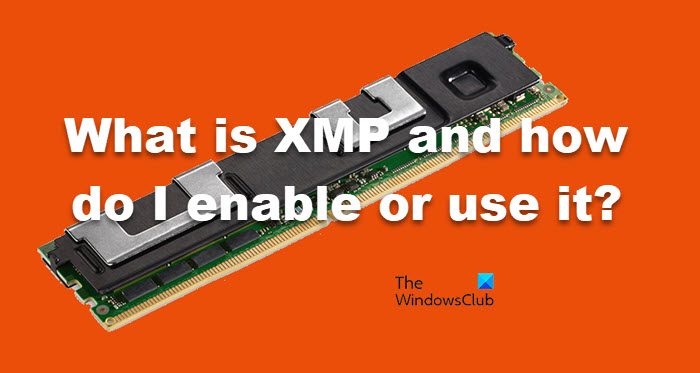What is XMP?
XMP is an abbreviation of Extreme Memory Profile. It is an Intel technology that contains different memory profiles and allows you to switch between them. So, you can select a profile with a higher memory speed when you need extra from your volatile memory. This will also allow you to overclock your memory without playing with frequency, voltage, and timings. Even though it is an Intel technology, it is available on AMD systems as well. Which is also called AMP or AMD Memory Profiles.
Working of XMP or Extreme Memory Profile
The moment your computer starts booting up, a power-on self-test is conducted. This test configures all the hardware added to your system, including your RAM. Everything from model number to timing and frequency is noted in this process. SDP or Serial Presence Detect, which is a chip on your RAM, is used by your BIOS to correctly set the memory timing and frequencies properly. XMP is nothing but an extension of SDP. It gives higher frequencies as well as better timing for the memory. Not only that, it stabilized overclocking by correcting the input voltage. Which will not hinder your gaming experience. XMP Profiles grant your RAM the permission to run on a high-performance model, which is better than the industry DDR standards.
How to enable and use XMP?
You can easily enable XMP from the BIOS. However, BIOS settings are different on different OEMs. But, first, let us boot into BIOS/UEFI on your computer. Now, if you are seeing XMP on the first window, just enable it. If you are unable to find XMP there, go to Advanced Menu or Mode, and look for it under Tweaker tab. Just enable it and you will be good to go. If you want to check if enabling XMP made any difference, just check RAM Speed and if it’s high, you know the feature worked. You can also use CPU Z or like apps to do the same. You don’t need to anything extra to use XMP, once it is enabled, you will start seeing difference in performance.
Should I run RAM at XMP?
JEDEC or Joint Electron Device Engineering Council sets standards for almost all the electronics components including your RAM. So, when you buy RAM off-the-rack, you are getting the advertised speed. On the other hand, XMP allows you to push that RAM a little further without compromising a lot. So, if you want that kind of result, you should definitely run RAM at XMP, but if you are every day, there is no need for you to go into the BIOS and turn the feature on.
Does XMP damage RAM?
No, XMP Profile can’t damage your RAM. Your RAM is made to endure the kind of stress increasing the speed would put. However, there are scenarios where XMP has damaged in CPU. Which is pretty understandable as your XMP needs more voltage and that can damage your CPU in long run. However, if I would have to pick between overclocking and using a higher XMP profile, I would go for the later and that’s what you should pick as well. But if you still want to go for an overclocking app, check our list of some of the best Overclocking apps. Read: Find out Computer RAM, Graphics Card/Video memory on Windows 11/10.

